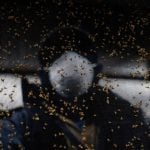Want to know how our part of the planet is doing? Ask the Alberta Biodiversity Monitoring Institute.
“We’re one of the best, or the best in the world,” said Jim Herbers, the institute’s information centre director.
“Alberta can absolutely claim to be among the top three jurisdictions on the planet Earth, in terms of monitoring the health of our biodiversity. There are comparable levels of information available for the United Kingdom and Switzerland.”
A partnership of industry, government and academia, the institute monitors more than 2,000 species and habitats. The unbiased, science-based information is then used to assist government and other stakeholders when making land, flora and fauna management decisions.
Read Also

Grazing ‘sweet spot’ boosts pasture performance
Timing-focused approach to pasture management touted to boost forage growth, livestock gains while also cutting farmer labour and inputs
“We actually started out as the Alberta Forest Biodiversity Monitoring Program and this goes all the way back to about 1998,” said Herbers. “We transitioned into a prototype phase which brought on a whole bunch of additional stakeholders in 2003.”
At that time, the organization, until then funded by academic sources, expanded both its funding base and mandate, which now includes the entire province.
“Right now it’s funded about 50 per cent through the government of Alberta and 50 per cent through industry, and that’s primarily the oil and gas industry,” Herbers said.
Gas and oil companies use the data for environmental impact statements, as well as in other efforts.
“One of the big applications for us is around land-use planning,” said Herbers. “So setting clear, measurable targets about what we want to see on our landscapes in five, 10, 20 years from now, and what kind of legacy we want to pass on to our children and our grandchildren.”
The non-profit organization has about 30 full-time staff and 40 seasonal employees.
“We’re delivered through a partnership of four organizations,” said Herbers. “The University of Alberta is sort of our home, we’re an affiliate institute on the U of A campus. And then we have strong partnerships with Alberta Innovates Technology Futures in Vegreville, with the Royal Alberta Museum and with the University of Calgary.”
Flora and fauna
Data is collected from 1,656 different sites on a 20-kilometre grid within the province, and on mammals, invertebrates, aquatic life, plants, lichens, moss, fungi, habitat structures and the human footprint at each of the monitoring locations. The sites are surveyed in rotation once every five years, allowing for a consistently current information pool.
Landowners do not have to permit the surveys, but if they do, they receive detailed reports on the health of their property. Small samples are taken, and the site is visited three times during the survey year. Sites are always accessed by foot, and the identity of the landowners and land locations is never shared. The organization only gathers data and does not make recommendations on caring for the habitat.
The data isn’t just accessed by producers or industry anyone with an interest in the can tap into the database.
“Anybody with an Internet connection can find out what kind of species are around anywhere, from a municipality to a backyard,” Herbers said.
Its website is www.abmi.ca
———
“AnybodywithanInternet connectioncanfindout whatkindofspeciesare aroundanywherefroma municipalitytoabackyard.”
Jim Herbers abmi














